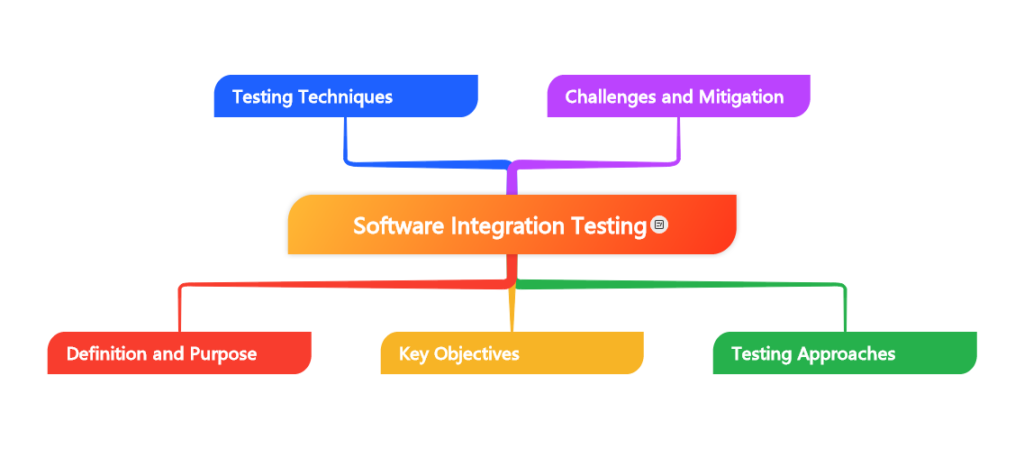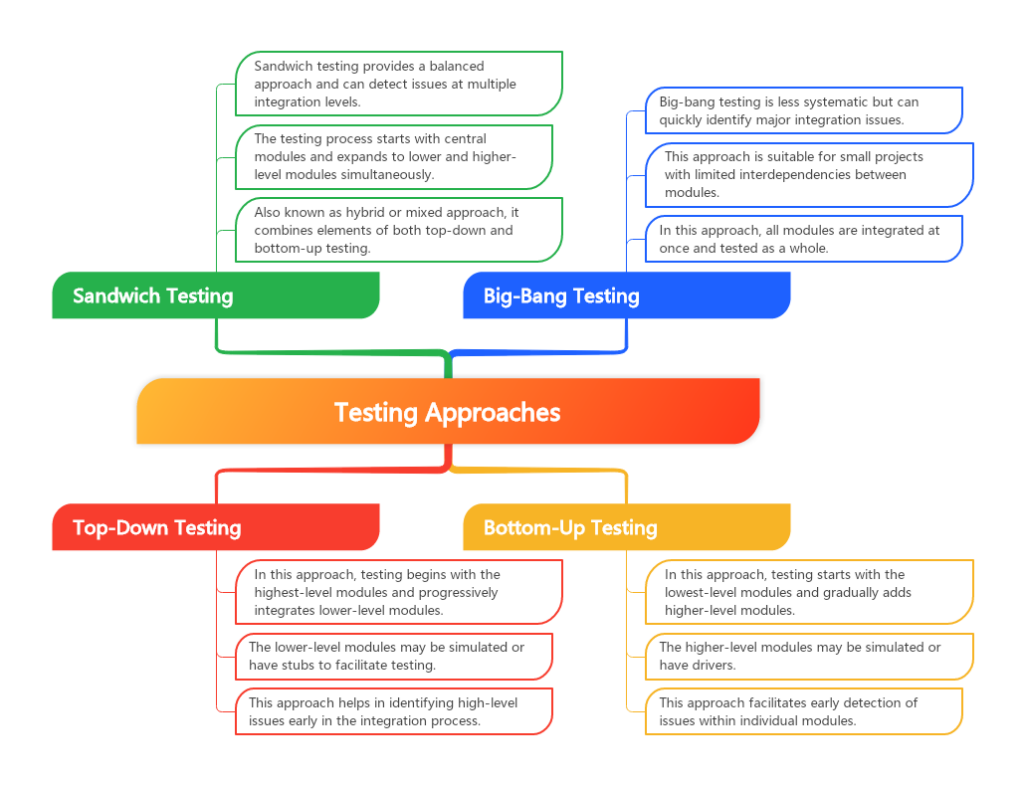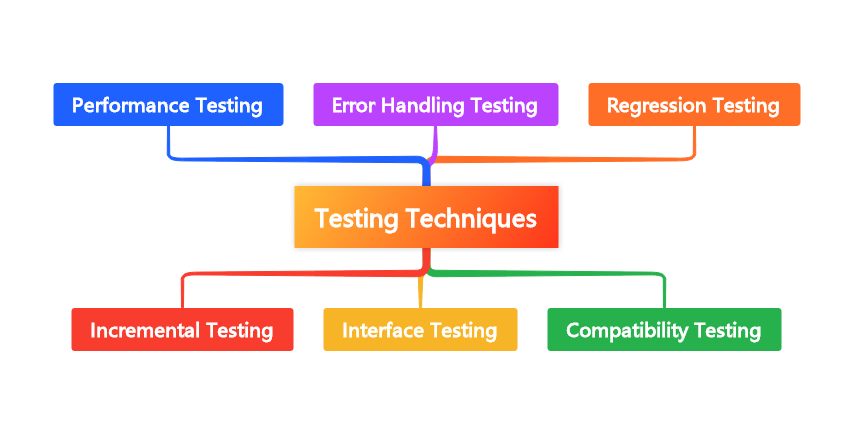Software Integration Testing:
Software integration testing is essential to development because it guarantees system components work well together. It includes testing module, subsystem, and system interactions to find and correct compatibility, interface, and data errors. This testing verifies that the integrated software system satisfies criteria and works properly. Integration testing ensures that all components function together, reducing risks and enhancing software quality. It also helps find bugs early in the development cycle, speeding up resolution and improving efficiency.
Here are the important areas that one should focus on.
- Definition and Purpose:
- Software Integration Testing involves testing software components together to verify they operate together.
- Software Integration Testing finds and fixes software component integration problems.
- This testing checks integrated module interfaces, connectivity, and data flow.
- It verifies the integrated software system satisfies specifications and performs properly.
- Key Objectives:
- To detect defects and issues that may arise due to the interaction of integrated software modules.
- To ensure that the integrated software functions correctly and delivers the expected functionality.
- To validate the interfaces, dependencies, and interactions between software components.
- To verify the data exchange and synchronization between integrated modules.
- To assess the overall performance, reliability, and robustness of the integrated software system.
- Testing Approaches:
- Top-Down Testing:
- In this approach, testing begins with the highest-level modules and progressively integrates lower-level modules.
- The lower-level modules may be simulated or have stubs to facilitate testing.
- This approach helps in identifying high-level issues early in the integration process.
- Bottom-Up Testing:
- In this approach, testing starts with the lowest-level modules and gradually adds higher-level modules.
- The higher-level modules may be simulated or have drivers.
- This approach facilitates early detection of issues within individual modules.
- Sandwich Testing
- Also known as hybrid or mixed approach, it combines elements of both top-down and bottom-up testing.
- The testing process starts with central modules and expands to lower and higher-level modules simultaneously.
- Sandwich testing provides a balanced approach and can detect issues at multiple integration levels.
- Top-Down Testing:
- Big-Bang Testing:
- In this approach, all modules are integrated at once and tested as a whole.
- This approach is suitable for small projects with limited interdependencies between modules.
- Big-bang testing is less systematic but can quickly identify major integration issues.
- Testing Technique :
- Incremental Testing:
- Modules undergo progressive integration and testing to guarantee smooth integration.
- Each little integration step is evaluated before moving on.
- Early integration problem identification and isolation for resolution are possible with this method.
- Interface Testing:
- Tests integrated module interfaces.
- It verifies that modules interact and share data properly.
- Interface testing assures module compatibility and interaction.
- Compatibility Testing :
-
- Ensures integrated software works with many platforms, operating systems, and hardware.
- Testing checks that software works in various contexts and installations.
- This testing detects compatibility problems and assures programme usability.
-
- Performance Testing:
- Tests integrated software under different loads and situations.
- It evaluates integrated system reaction times, resource use, scalability, and dependability.
- Performance testing optimises programme performance and finds bottlenecks.
- Incremental Testing:
-
- Error Handling Testing
- Tests the integrated software system’s error handling.
- It checks how the system handles mistakes, exceptions, and surprises.
- Tests guarantee that software handles mistakes gracefully and avoids major failures.
- Regression Testing
- Make sure integration doesn’t cause new problems or disturb current functionality.
- Rerunning previous test cases after integration verifies functionality.
- Regression testing keeps the integrated software system stable and reliable.
- Error Handling Testing




1 thought on “Software Integration Testing”